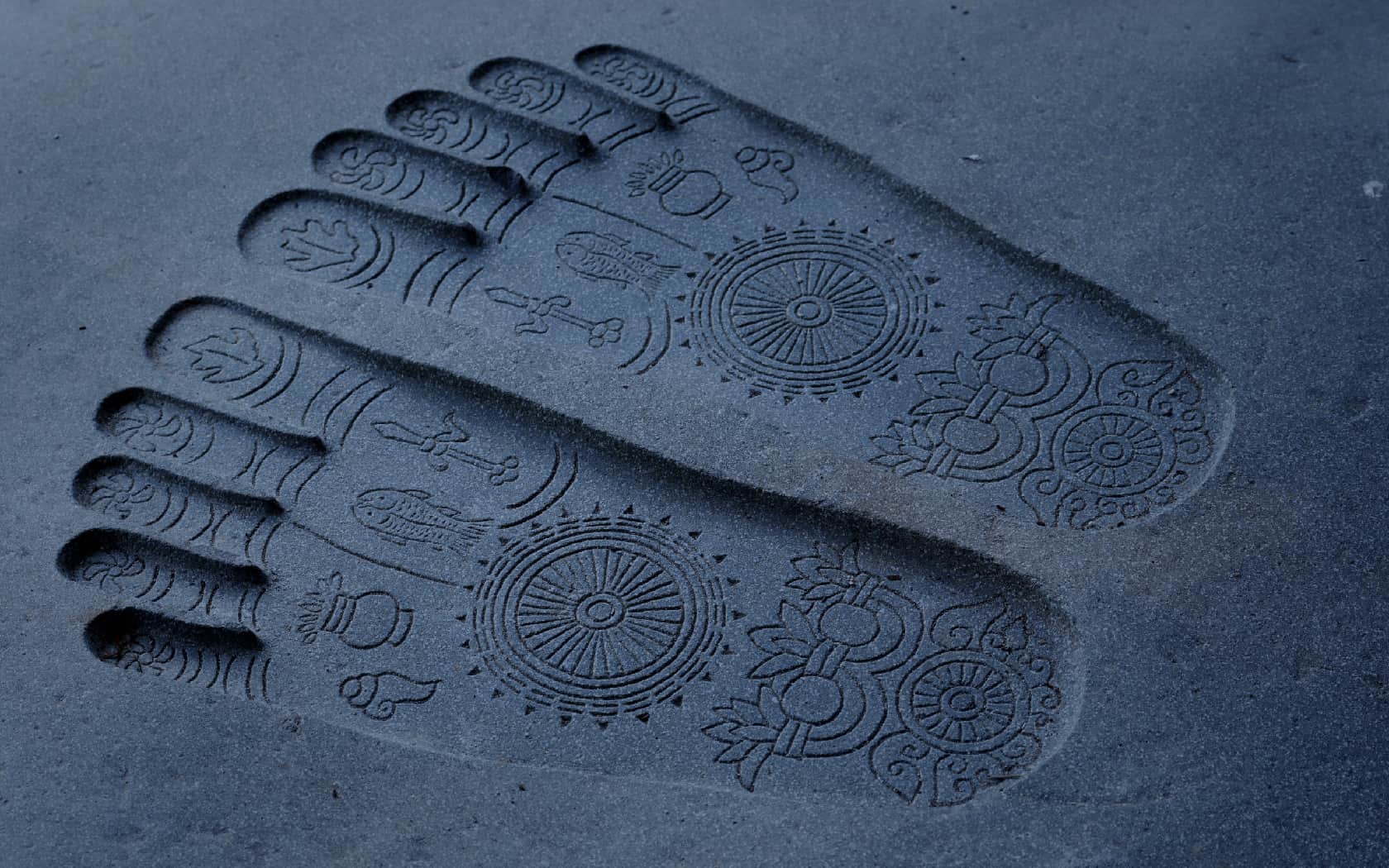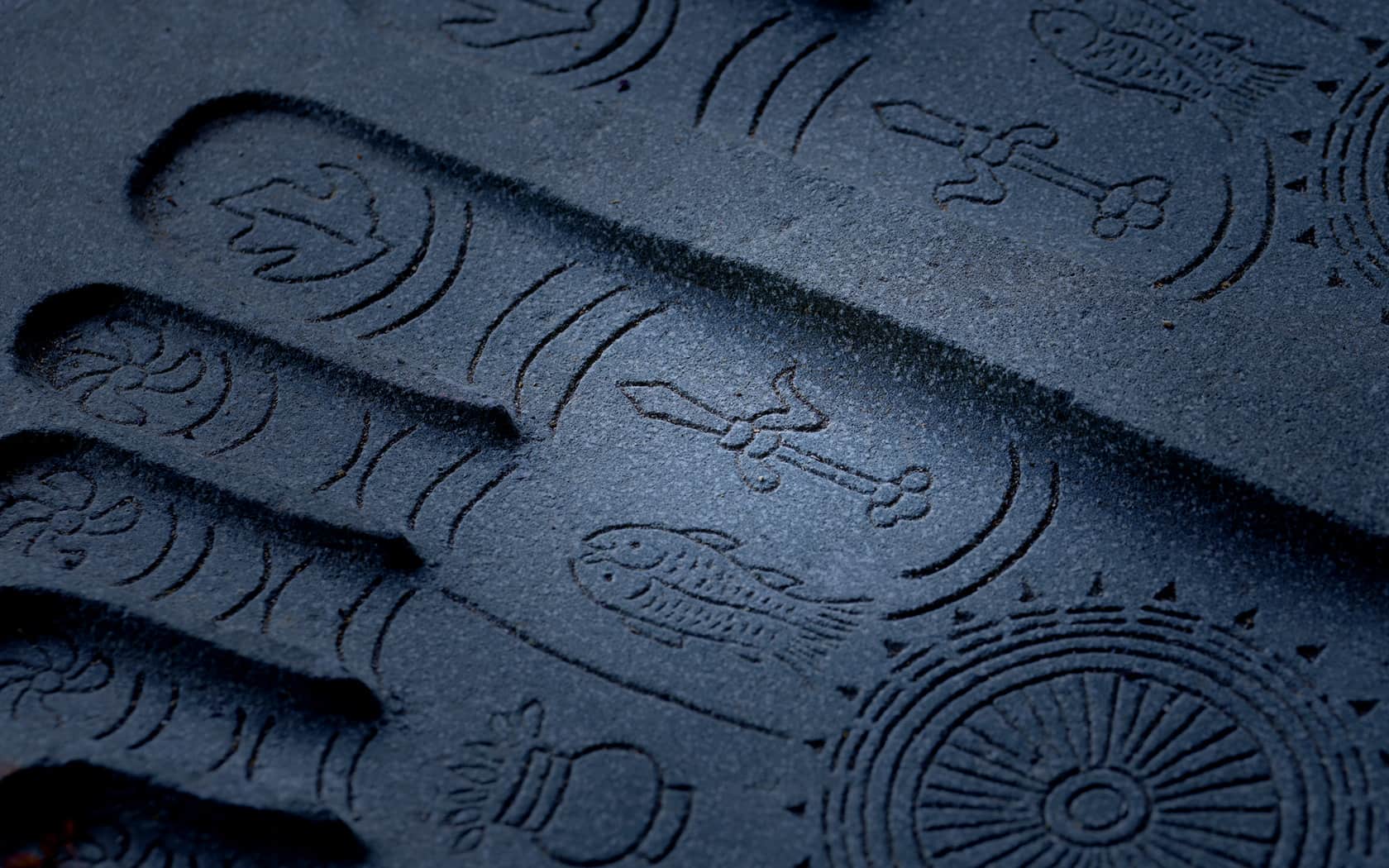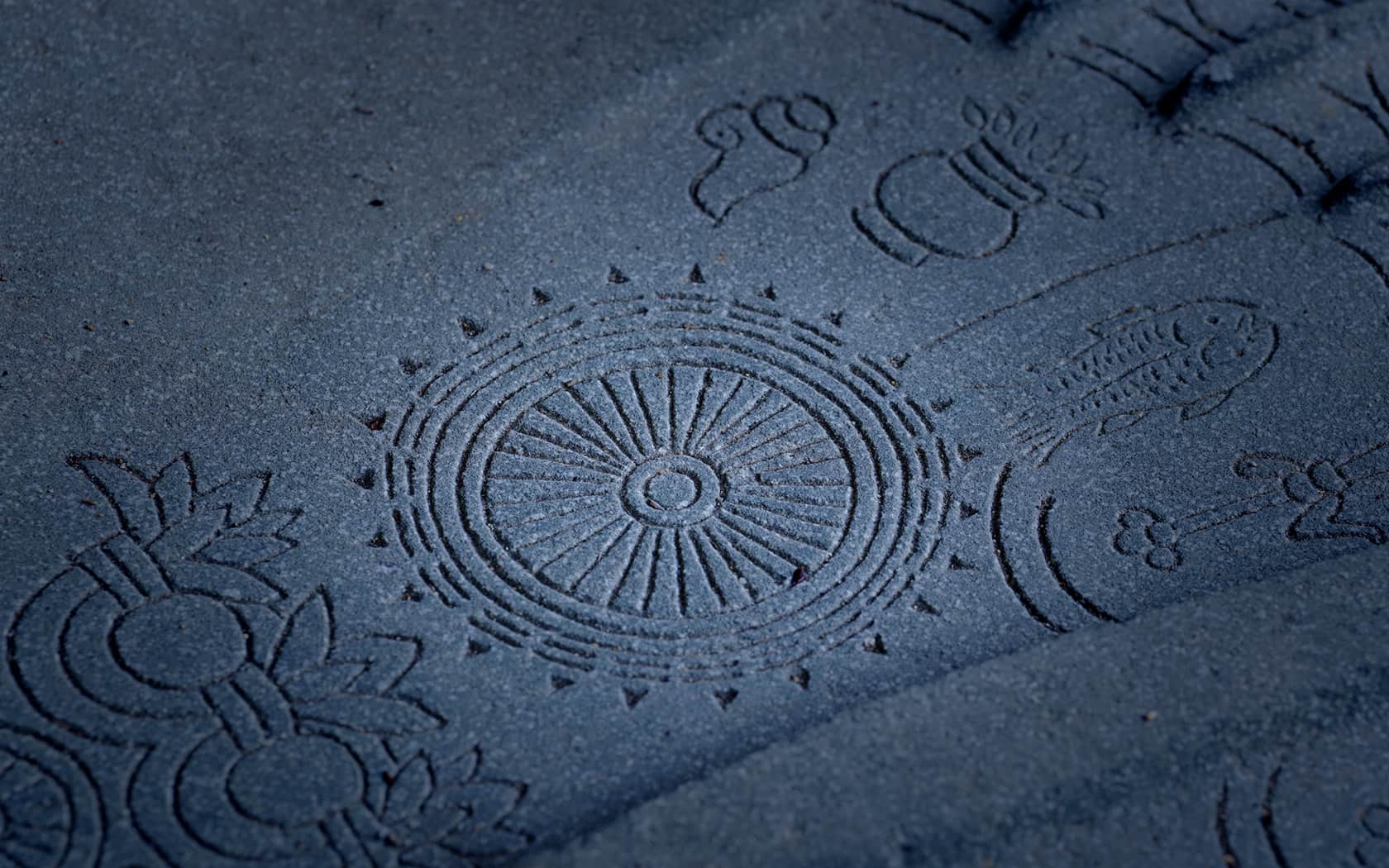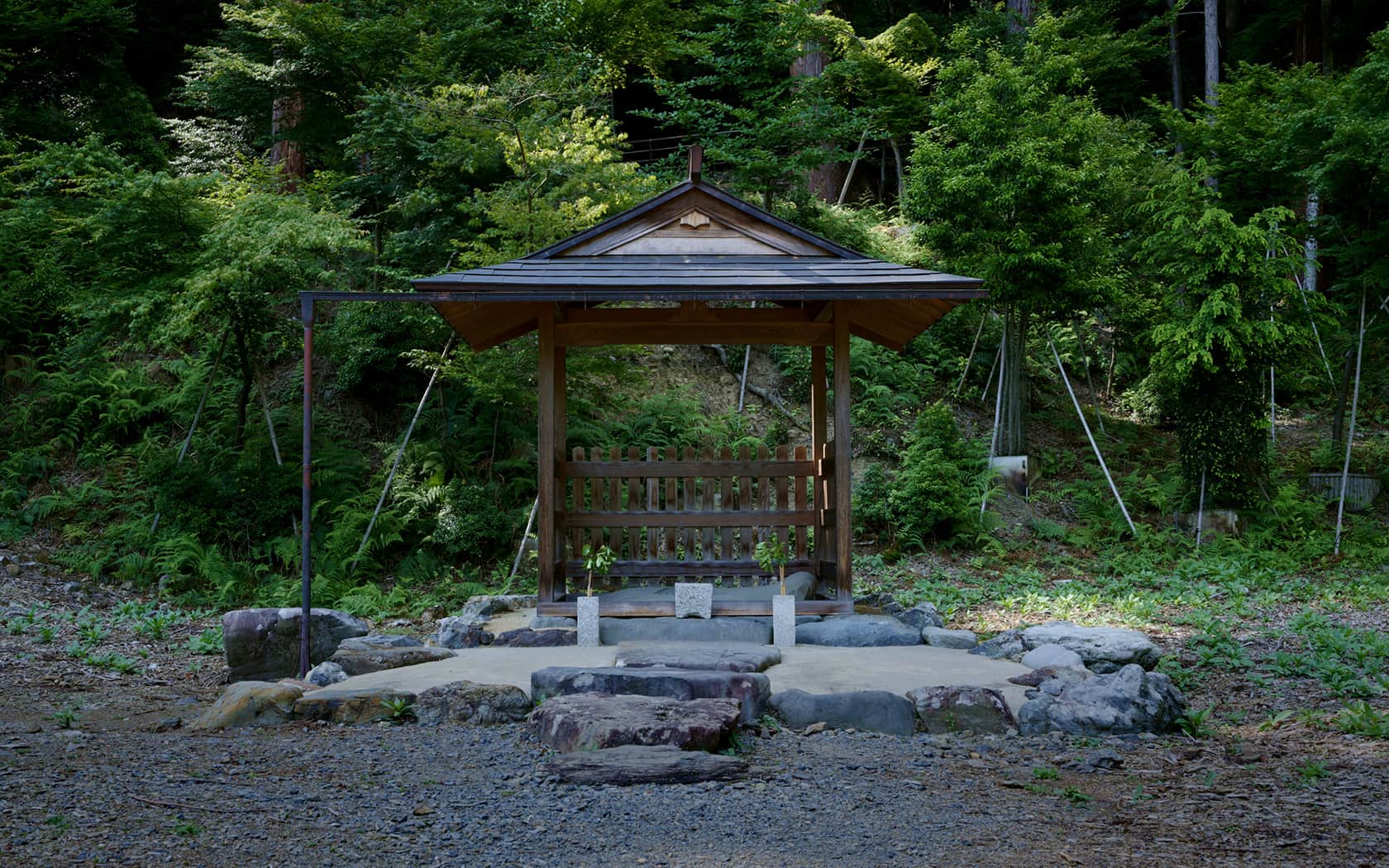Direct representations of Shakyamuni Buddha, the historical Buddha and founder of Buddhism, were taboo until around the first century CE. His image was considered too sacred to be portrayed in art. Instead, a sense of his presence was often conveyed in the form of bussokuseki—stone slabs bearing his footprints. Bussokuseki were among the earliest ways to represent the Buddha and can be found throughout Asia.
Kosanji Temple’s bussokuseki was carved in the Edo period (1603–1867). The footprints are engraved with various Buddhist symbols. These include a lucky double-fish mark, an indestructible mallet of power, and also a thousand-spoked wheel, which represents the historical Buddha, his teachings, and the path to enlightenment.

double-fish mark
A pattern depicting a pair of male and female fish facing each other, symbolizing the wish for the prosperity of descendants. It is considered an auspicious design.
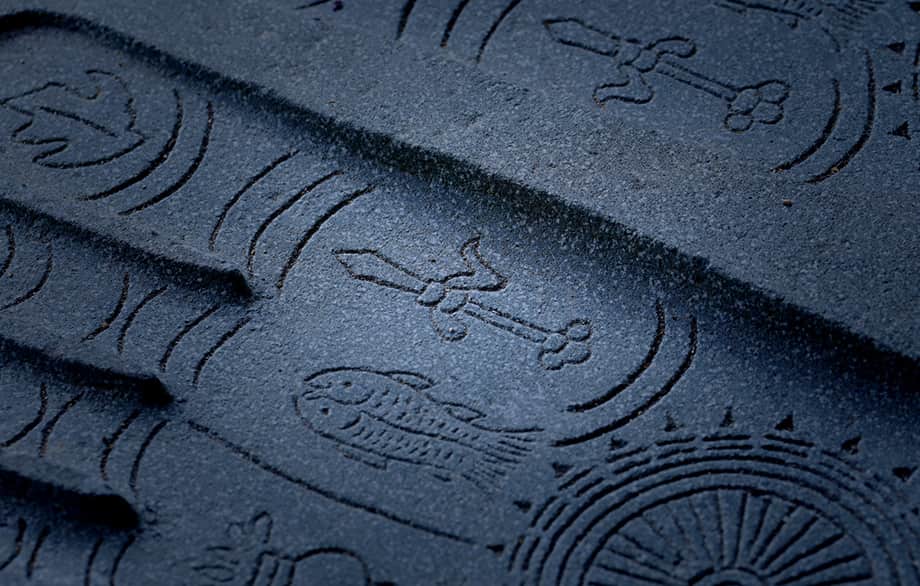
mallet of power
Originating from ancient Indian weaponry, it symbolizes the aspiration for Buddhahood that shatters worldly desires.
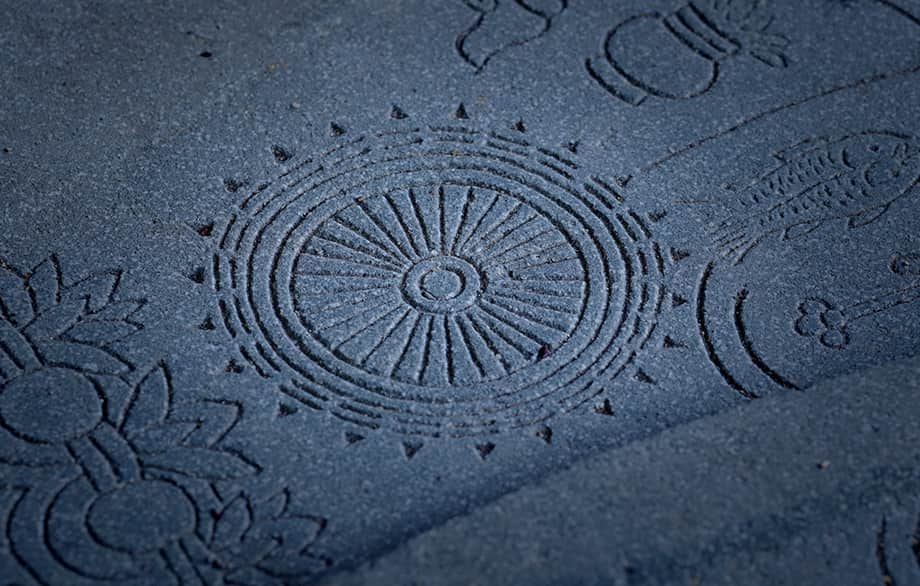
thousand-spoked wheel
A pattern in the shape of a wheel with a thousand spokes found on the soles of the Buddha's feet, representing one of the thirty-two features of the Buddha.


